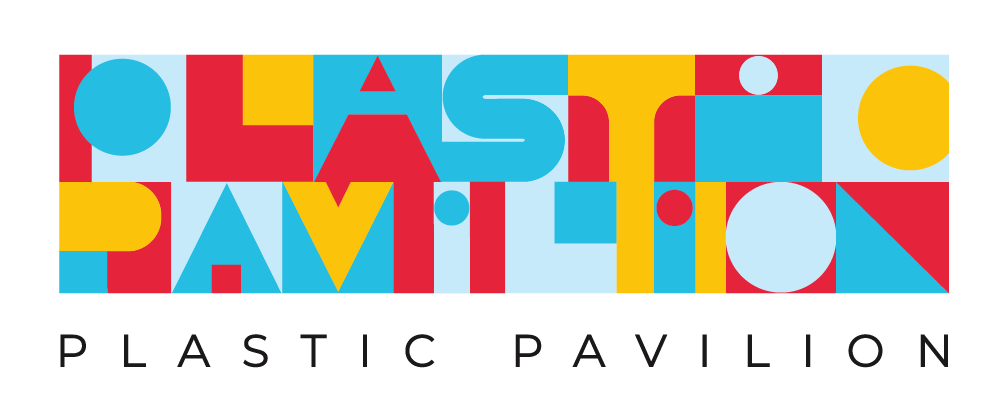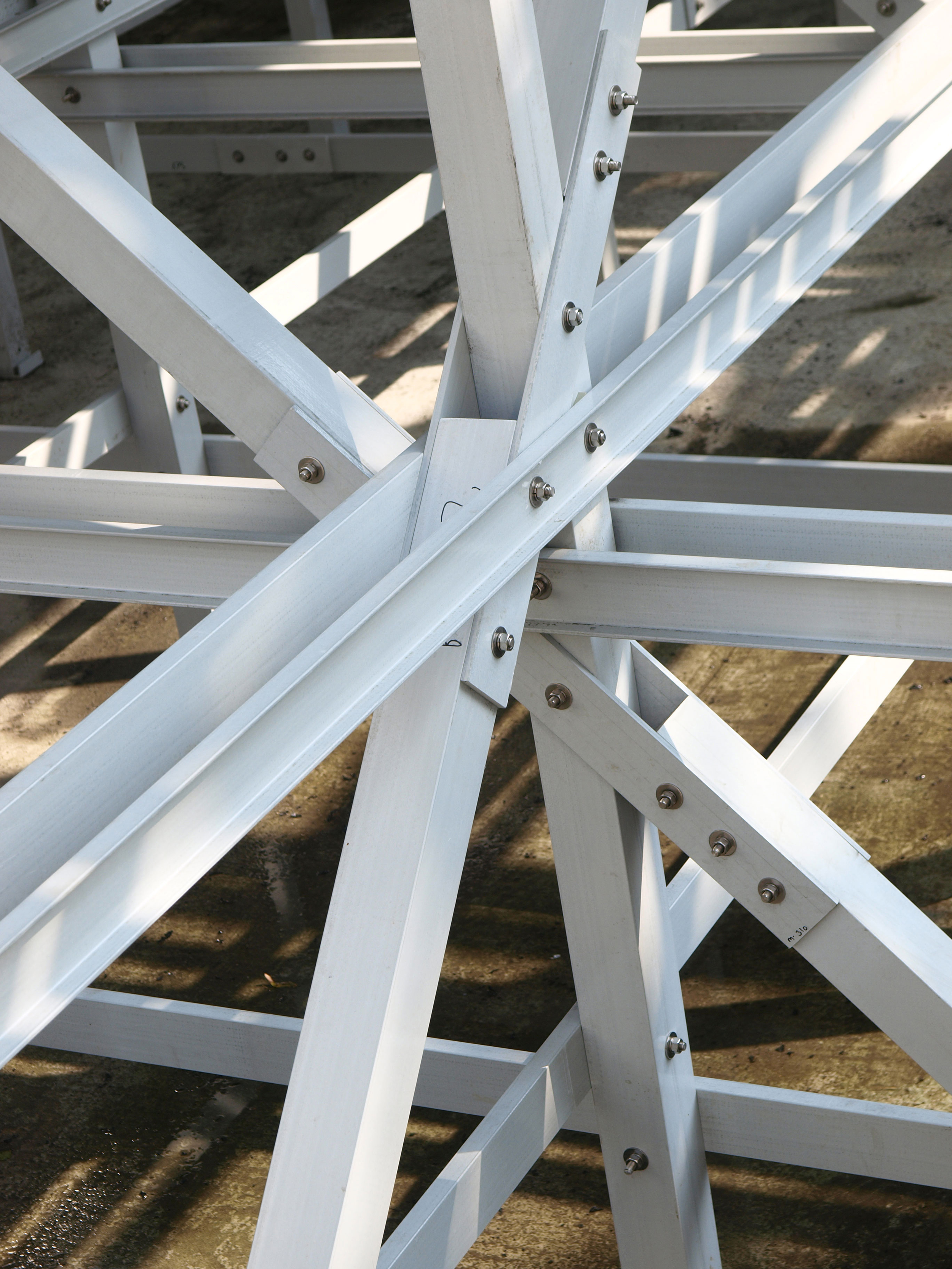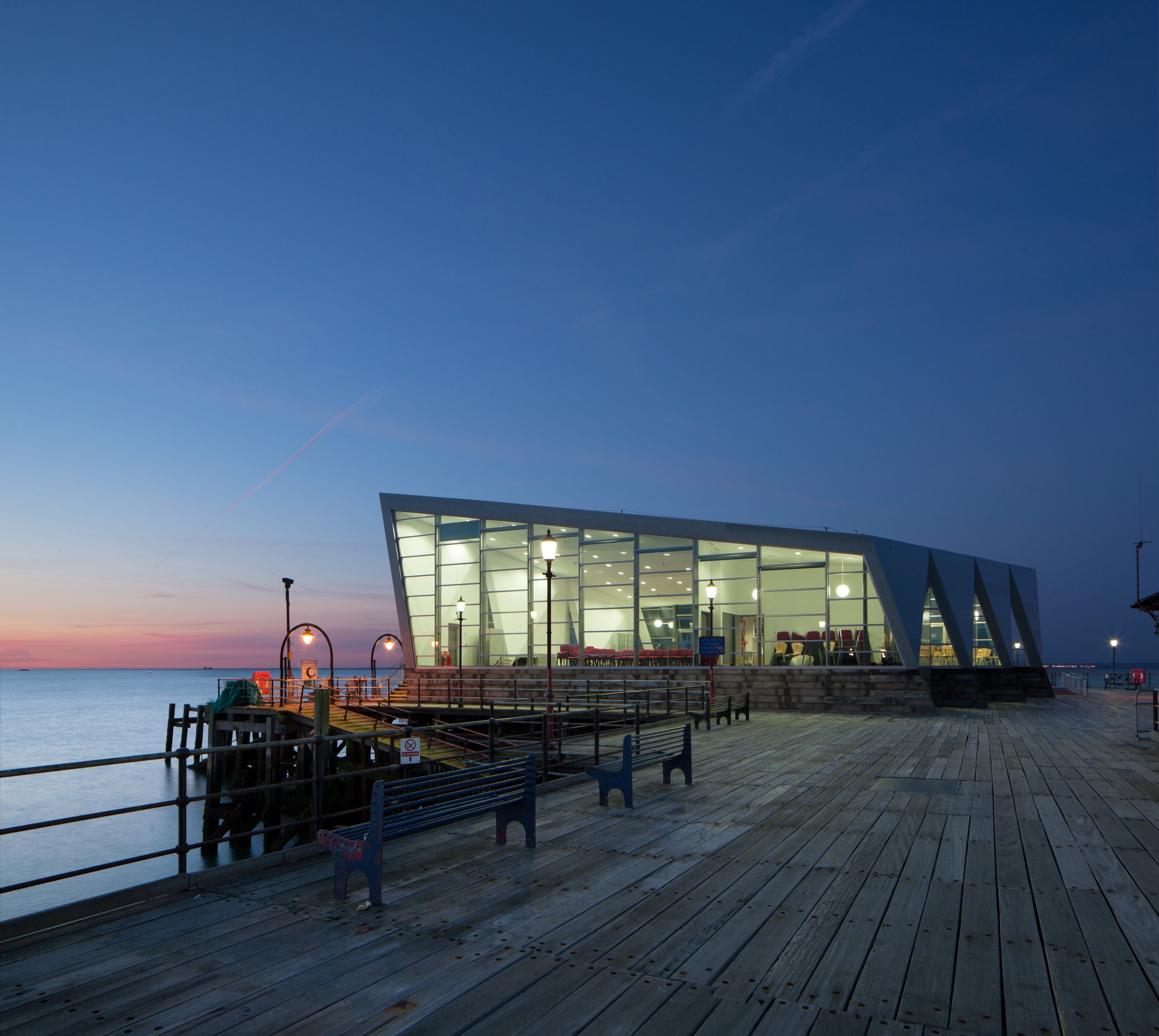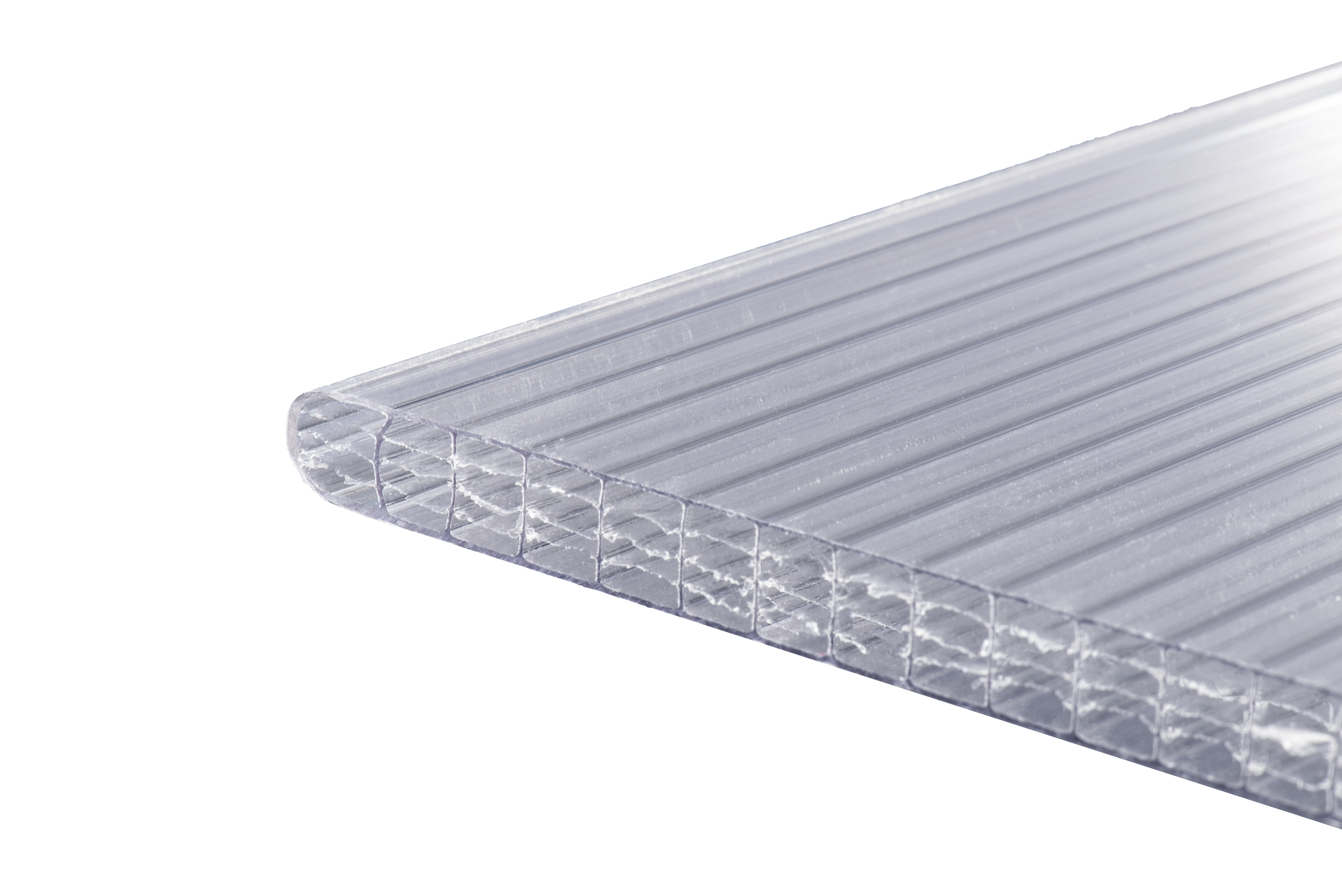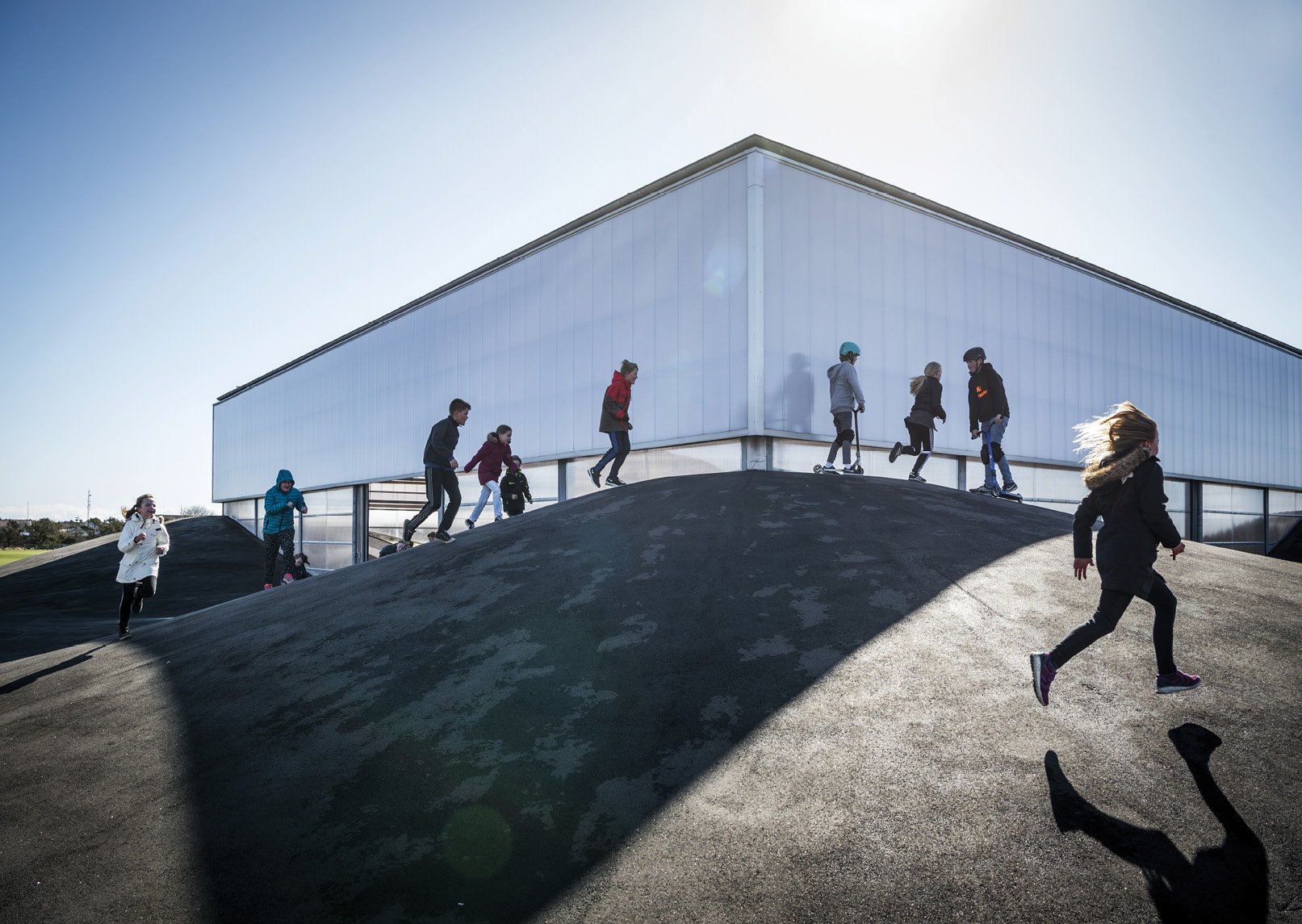Pavilion Materials
The pavilion consists of essential components: The base, the spatial structure, the wall and roof structure, the roof cover and display walls, and the exhibition display boxes. All of the components are made from plastic. Read about them and their proporties here.
Overview of the Plastic Pavilion Structure & Materials
Roof cover in multi-layer plastic sheets provided by VINK Plast
Roof structure in fibreglass provided by Fiberline Building Profiles
Display boxes in recycled acrylic Provided GOP Denmark and Silkeborg Plast
Structural walls in fibreglass provided by Fiberline Building Profiles
3D-printed base & spatial structure provided by WOHN
The pavilion Roof Structure & Structural walls
The walls and roof structure are made from a fibreglass, a plastic-based composite consisting of glass fibres and polyester. They are designed with fibreglass square tubes, strip profiles, angle profiles, and I-profiles.
Structural profiles and planks made from fibreglass provide a resource-saving and energy-efficient alternative to traditional construction materials, like steel, wood, aluminium and concrete.
Unlike these materials, fibreglass combines a number of advantages including high strength, low weight, and unrivalled corrosion resistance. This makes fibreglass profiles and -planks suitable for a variety of construction purposes, including load bearing construction like the Plastic Pavilion.
What is fibreglass?
The material is a plastic-based composite consisting of glass fibres and polyester. At Fiberline Building Profiles, the production technology is pultrusion, which is a process for continuously producing composite profiles with a constant cross section and material properties precisely tailored to their application. This enables a unique combination of advantages:
Strength as steel and only 1/5 of the weight - Corrosion- and weather resistant - Minimal resources for maintenance - 100% recyclable material - Designed for reuse - Energy-optimised production process.
Foto: The wall and roof structure in Plastic Pavilion
Cases from Fiberline Building Profiles
Structural profiles and planks made from fibreglass provide a resource-saving and energy-efficient alternative to traditional materials such as steel, wood, aluminium and concrete.
Fibreglass facade planks have unique insulating properties, low weight, excellent durability. An invisible mounting system provides for unique aesthetic possibilities.
Roof cover
The roof covering is made from VINK sheets called Gallina ArcoPlus. The sheets are durable, lightweight and have a crystal clear surface.
Gallina Acro Plus sheets are made from pure polycarbonate, which at the end of its life-span can relatively easily be melted due to a low melting temperature. The new resin can then be used for new injection molded products such as shipping containers or electronic protection.
The structure of the boards provides exceptional rigidity and thermal insulation. The panels are used worldwide by architects and designers who want to let in light and retain heat on cold days.
The panels come in a wide range of structures, colors, surfaces and finishes.
The poster walls in the pavilion and the base of the display boxes are also made from multiple layers of polycarbonate. The sheets, called Lexan Termoclear, are designed to provide a combination of durability, aesthetics and good insulation properties combined with low weight.
Foto: Plastic Pavilion Roof cover as seen from above
Cases from VINK Plast
Facade cladding from Vink used for the facade of Harboørehallen in Western Jutland.
Roof and facade cladding from Vink used for the facade and roof extensions at Viborg Streetmekka.
3D-printed base & spatial structure
The 3D-printed base structures in the pavilion play a crucial role in ensuring stability, forming an archipelago of foundations and a full-scale spatial structure
The 3D-printed structures serve as seamless joints, smoothly bridging the transition between the horizontal ground and the vertical movement of the stud walls.
The WOHN print material is a combination of waste wood and waste plastic, ingeniously transformed into a composite compound with exceptional printing and performance capabilities.
WOHN takses back and recycles materials at end-of-life.
Foto: The 3D-printed Spatial Structure in Plastic Pavilion
GOP Danmark & Silkeborg Plast
Display Boxes
The display boxes are made from recycled clear acrylic and designed to showcase exhibition products.
Foto: The Materials on Display in the Exhibition
